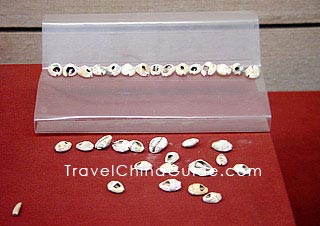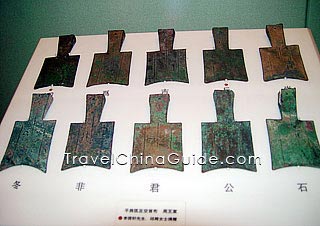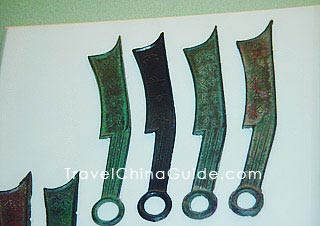Home / Chinese Culture /
Shell Money before Qin Dynasty
 |
| Ancient Shell Money |
At the end of the Shang Dynasty, northerners in China found it was hard to find enough shells from the south, so they used other materials like pottery, stone, bone, jade, bronze and gold to make shell-shaped money. The bronze shell-shaped coins heralded the mintage of Chinese coin. It was a great leap in the evolution of Chinese currency. Featuring the comparatively unified size, weight and value, the bronze shell-shaped coin entered the circulation smoothly.
After the Spring and Autumn Period, Chu State (present-day Hubei and Hunan) minted coins with Chinese characters. Some of them looked like ants climbing along a nose and some like the face of ghosts. In north China, gold, silver and gold-plating bronze shells appeared.
Spade-shaped and knife-shaped coins were also popular in northern China. The influence of shell did not fade though it staged out as a currency with the social and economic development.
|
|
- Last updated on Aug. 08, 2022 -

